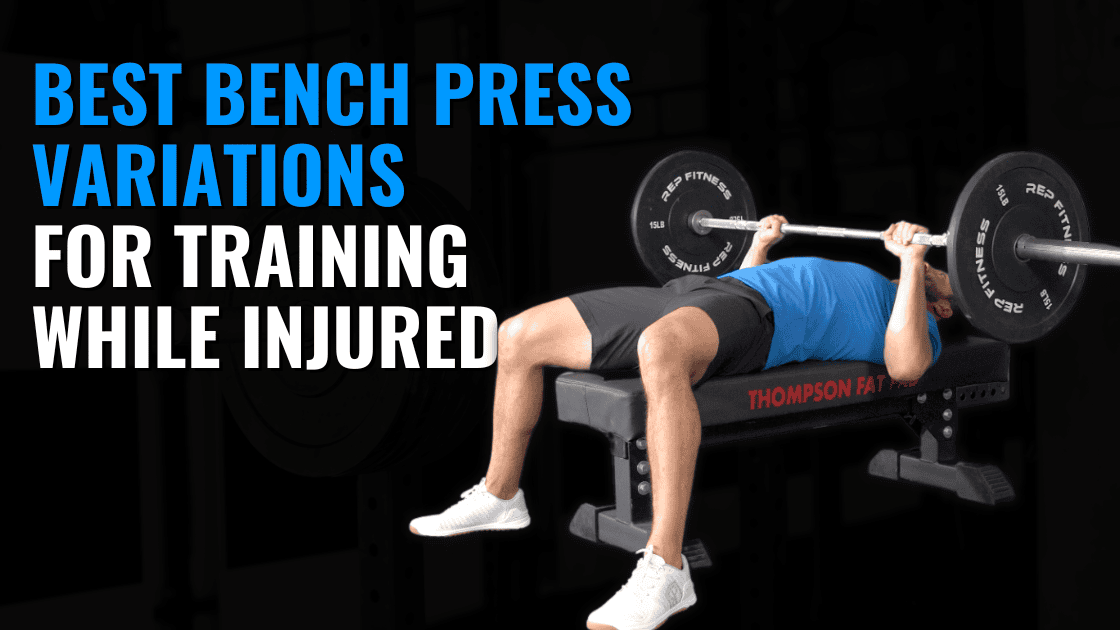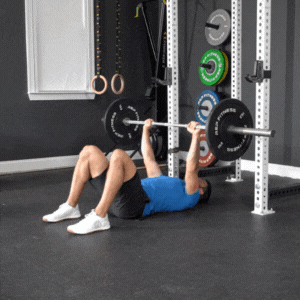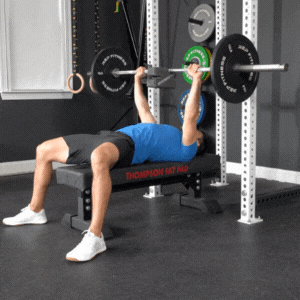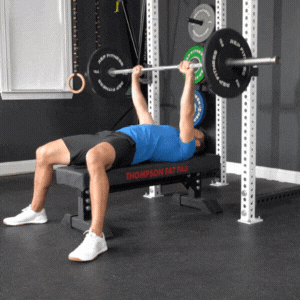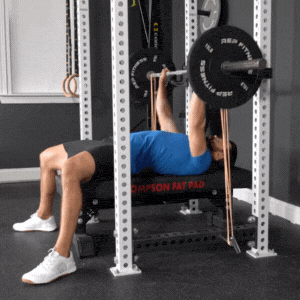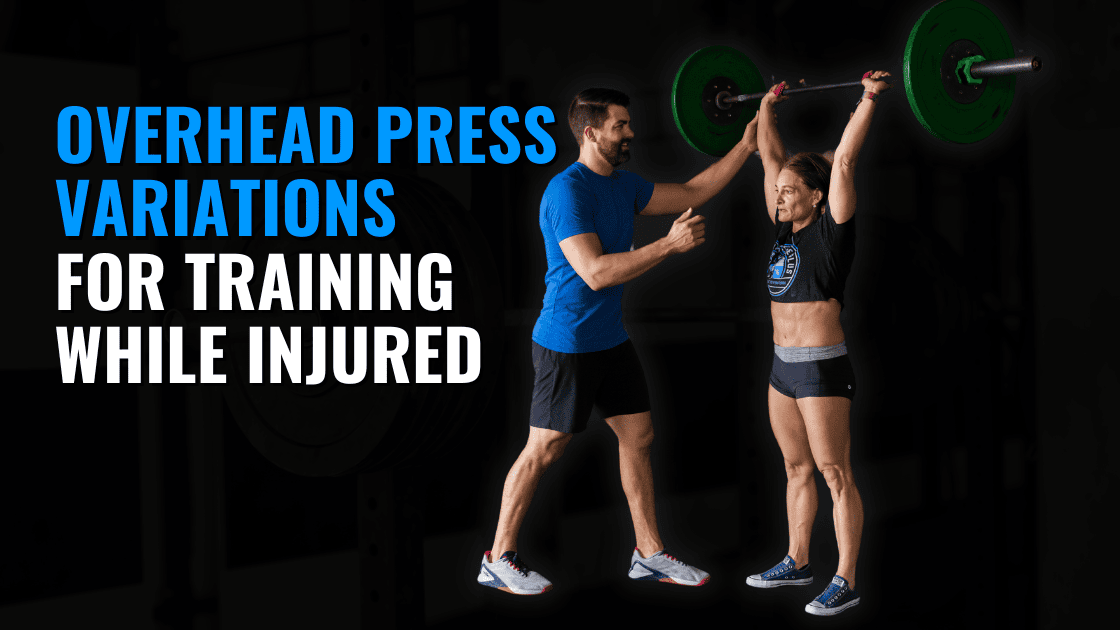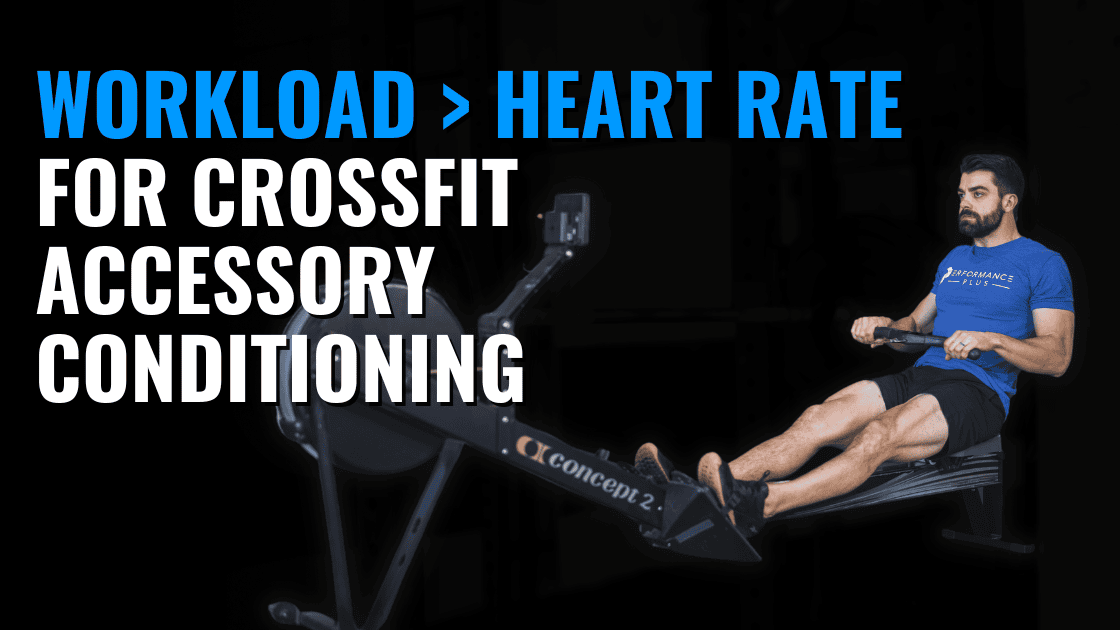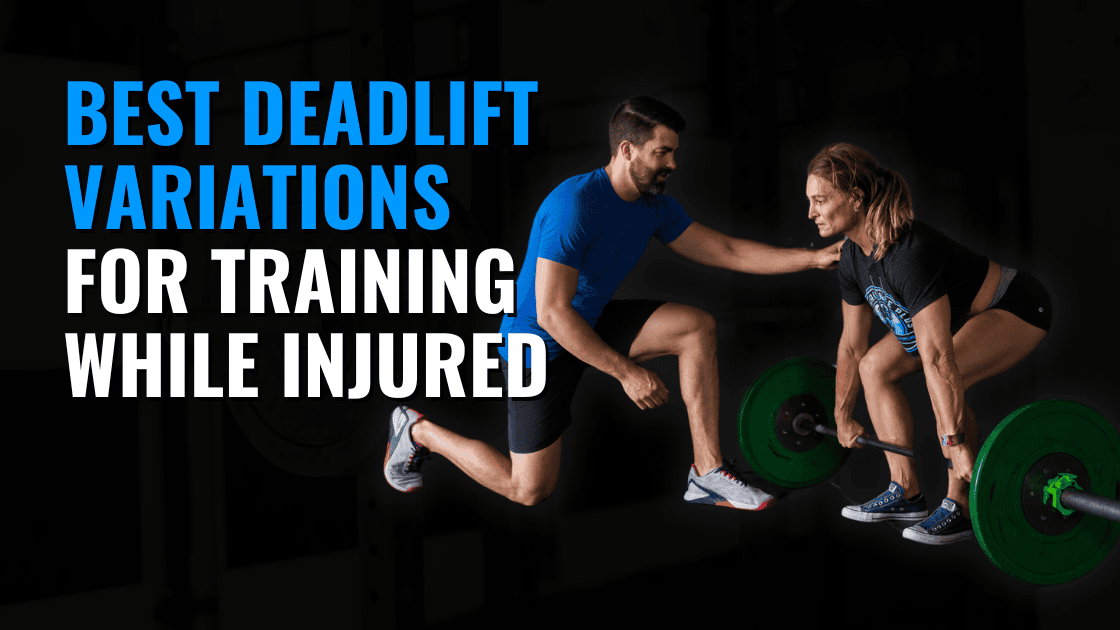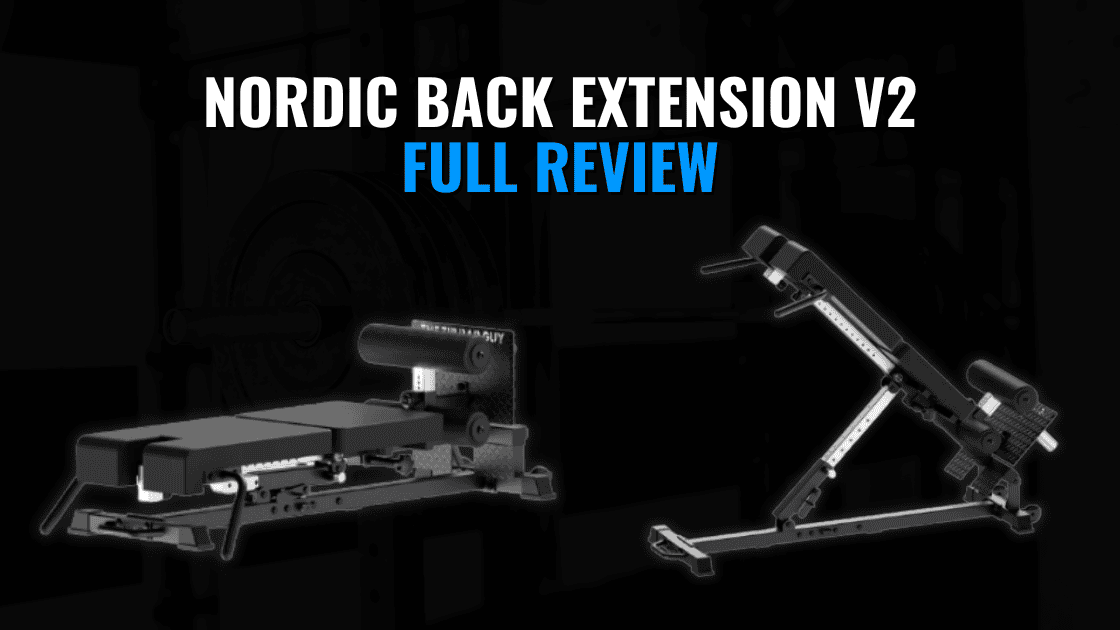Bench Press Shoulder Pain – Keep Training with These Bench Variations
For athletes dealing with shoulder pain, pressing movements—especially the bench press—can become uncomfortable or even feel impossible. But that doesn’t mean we need to stop training. Often, we can modify exercises to continue building pushing strength without further aggravating symptoms. Below are many of the best bench press variations that I have found allow athletes to keep training through pain while respecting the healing process.
Related Resources:
- Eliminate Shoulder Pain During the Bench Press
- Elbow Pain During the Bench Press
- Bulletproof Shoulders
Close Grip Bench Press
The close grip bench press is a powerful tool for developing pressing strength—especially when shoulder pain is present. Research has shown that using a narrow grip width significantly reduces compressive forces at the acromioclavicular (AC) joint. Additionally, this variation decreases posterior shear forces and rotator cuff demand, making it ideal for those with AC joint pain, posterior instability, or general shoulder irritation.
One caveat: If pain is worsened in the maximally extended shoulder position (i.e., at the bottom of the lift), a different variation may be better suited.
Neutral Grip Dumbbell Press / Football Bar Press
Like the close grip press, the neutral grip dumbbell press maintains a narrower grip but introduces greater freedom of movement. This often makes it a more shoulder-friendly variation. Similarly, the football bar allows for a neutral or semi-pronated grip, placing the shoulder in a less provocative position than a traditional barbell bench press.
Floor Press
Many athletes get shoulder pain specifically in the bottom of the bench press. For them, the floor press is a fantastic option. With the elbows restricted by the ground, shoulder extension is limited—reducing anterior shoulder strain while still allowing heavy pressing. It’s also a great movement to focus on lockout strength.
Board Press (or Bench Blockz)
Board presses are another effective tool to reduce range of motion and avoid irritating shoulder extension. The beauty of this variation lies in its scalability—by changing the thickness of the boards, you can gradually increase the pressing range as tolerance improves. Because we are on the bench instead of the floor, we also get more specific practice to the positioning the rest of your body is in during the bench press.
Recommended Product: Bench Blokz make this modification more practical by eliminating the need for a partner to hold boards in place.
Incline Close Grip Bench Press
Incline bench pressing naturally reduces shoulder extension compared to flat benching. Combine that with a close grip, and you’ve got an incredibly joint-friendly movement that still challenges the triceps and shoulders. This makes the incline close grip press both a rehab-friendly and performance-driven accessory movement.
Spoto Press
The Spoto Press is performed by pausing the bar just an inch or two above the chest—without touching. This intentionally shortens the range of motion, reducing strain in the bottom position. It’s a great later-stage choice for those who want to keep pressing heavy without aggravating symptoms that arise at full depth.
Band-Resisted Bench Press
Incorporating bands into the bench press introduces accommodating resistance. This means the bottom range—often the most painful—is slightly unloaded, while resistance increases as you press toward lockout. For athletes who can tolerate full range of motion but not maximal loading, this is an excellent compromise to keep training hard while respecting shoulder irritability.
JM Press
A longtime staple in powerlifting circles, the JM Press is a hybrid of a close grip bench and a triceps extension. The bar travels toward the throat or collarbone, keeping the elbows tucked and the focus on the triceps. This minimizes load on the shoulders and pecs, making it a top-tier option for strength gains during shoulder rehab. Bands can also be added to further deload the bottom position and increase top-end tension.
Final Thoughts
Shoulder pain doesn’t have to sideline your bench press. By using intelligent modifications like the ones listed above, athletes can continue to press, build strength, and make progress—without setting their recovery back.
Find an Onward Physical Therapy location near you to work with a team of fitness forward providers to get you back to 100% fast – without loosing your hard earned gains.

